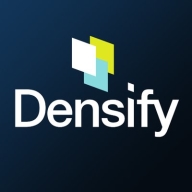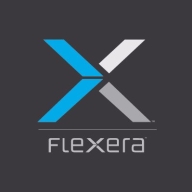

Flexera Cloud Management Platform and Densify are competing in cloud management and optimization. Densify is superior due to its advanced features and perceived value for cost, whereas Flexera CMP performs better in pricing and support.
Features: Flexera CMP provides comprehensive cloud management, governance, and optimization tools with broad asset visibility across multiple platforms. Densify offers real-time resource optimization, predictive analytics, and deep integration capabilities, dynamically optimizing resources.
Room for Improvement: Flexera could improve on its dynamic optimization and predictive analytics. Densify might work on simplifying the deployment model and broadening governance tools. Both could enhance their integration with more public cloud services.
Ease of Deployment and Customer Service: Flexera CMP offers straightforward deployment and strong customer support, ensuring easy integration. Densify, while providing detailed optimization tools, requires more initial deployment effort due to complex integration, though its customer service remains efficient.
Pricing and ROI: Flexera CMP offers competitive setup costs, with pricing aligned to budget constraints and satisfactory ROI through effective management. Densify may have higher initial costs but offers significant ROI due to extensive optimization and cost-saving features.
| Product | Market Share (%) |
|---|---|
| Flexera Cloud Management Platform (CMP) | 2.1% |
| Densify | 0.9% |
| Other | 97.0% |

| Company Size | Count |
|---|---|
| Small Business | 1 |
| Midsize Enterprise | 1 |
| Large Enterprise | 9 |
Densify is a hybrid cloud and container resource management platform that makes workloads self-aware of their precise resource requirements and automates the resource management and selection process. This solution helps you control your cloud spend and also helps your apps perform and scale better. Densify enables you to match your cloud requirements with the optimal cloud supply. Additionally, Densify is the only technology that leverages patented, predictive machine learning-powered analytics to perform advanced modeling of workload patterns, and provide precise optimization directives. It is ideal for cloud engineers, container platform owners, and IT finance.
Densify works by:
Densify Features
Densify has many valuable key features. Some of the most useful ones include:
Densify Benefits
There are many benefits to implementing Densify. Some of the biggest advantages the solution offers include:
Flexera Cloud Management Platform (CMP) offers comprehensive capabilities for managing cloud environments, enabling businesses to control costs, optimize resources, and ensure compliance across multiple cloud providers.
Flexera CMP is designed to streamline cloud management by providing a unified platform that supports automation, reporting, and policy enforcement. It empowers IT departments to efficiently manage multi-cloud environments by offering tools for workload optimization, visibility into cloud usage patterns, and governance features. Flexera CMP's integrations and customizable workflows enable seamless deployment and management of applications, reducing the complexity often associated with cloud operations.
What are the key features of Flexera CMP?Flexera CMP is particularly valuable for industries with complex IT environments such as finance, healthcare, and technology, where effective cloud management is critical to maintaining continuous operations. By leveraging Flexera CMP, these industries can optimize their cloud strategies, balance workloads efficiently, and ensure data security and compliance, thereby driving business transformation.
We monitor all Cloud Management reviews to prevent fraudulent reviews and keep review quality high. We do not post reviews by company employees or direct competitors. We validate each review for authenticity via cross-reference with LinkedIn, and personal follow-up with the reviewer when necessary.